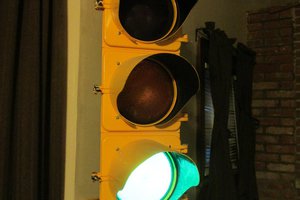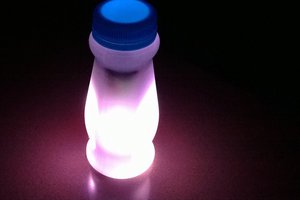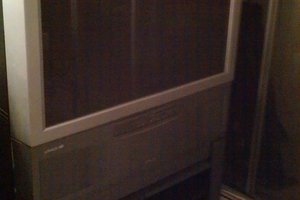The Point Behind It All
So why do this? Well, mostly it seemed like a good idea at the time. And every time we talk about it, it continues to be a good, but silly, idea. And like all good projects, because we can.
What do we have to work with?
THE LOCATION: The tower and cabin are located about 10 miles from any real civilization, and its all in an extremely wooded area. The tower is located a ways from the cabin in a clearing so that the sun can get to the solar panels.
THE TOWER: The tower itself is an old TV tower made out of tube steel in a triangle configuration, perhaps 1'x1' and roughly 20' tall. It has the little tripod at the top that would have held the TV antenna itself. Its sunk into a few feet of concrete, and has a few guy wires, so it's pretty stable.
THE POWER: The solar panels put out about 300 watts, and goes through a cheap-o Chinese solar controller to charge some high-capacity trolling motor batteries. The whole system is pretty much self-maintaining. We leave it alone for months at a time with no ill effects.
THE CONTROLLER: The cheap-o Chinese solar controller has a convenient hookup for a day/night light. On at dusk, off at dawn kind of stuff. It also appears to have a low-battery cutoff circuit, to prevent killing the batteries by constantly running the light load if they are low. This will work great for controlling power to this light.
Regulations?
Because this is something that will be on my friend's land, will be left alone for months at a time, and could potentially freak someone out, one of the first things I did was check to see what the FCC or the FAA has to say about these kinds of things. Tower-light-like things seem to be called many things for many different purposes by many different organizations. The FCC calls them marker lights or tower lights. The FAA calls them obstruction lighting or beacons. Near as I can tell, there's a few things to keep in mind about towers and lights.
- Towers must be painted and/or illuminated if they will "constitute a menace to air navigation"
- The FAA approves the substitution of high intensity white lights for a combination of red lights and painting
- There doesn't appear to be a consistant lower limit where you MUST mark the tower. See point 1.
- Amazingly enough (and totally unrelated to our situation), there is no absolute height limit for antenna towers! Presumably there is a good mechanical limit after which diminishing returns start to kick in. Although generally it appears that anything under 2,000' is considered acceptable.
I wasn't able to find any kind documentation that described the technical requirements for lighting, just the requirements of maintaining the lighting. Interesting.
Because the tower is only 20' tall (its not even above the tree line!) and we're not using it to really mark any air navigation corridors or anything like that, as near as I can tell, we're free to do whatever we like.
 leadacid44
leadacid44
 jupdyke
jupdyke

 frankstripod
frankstripod
 Andrea Console
Andrea Console